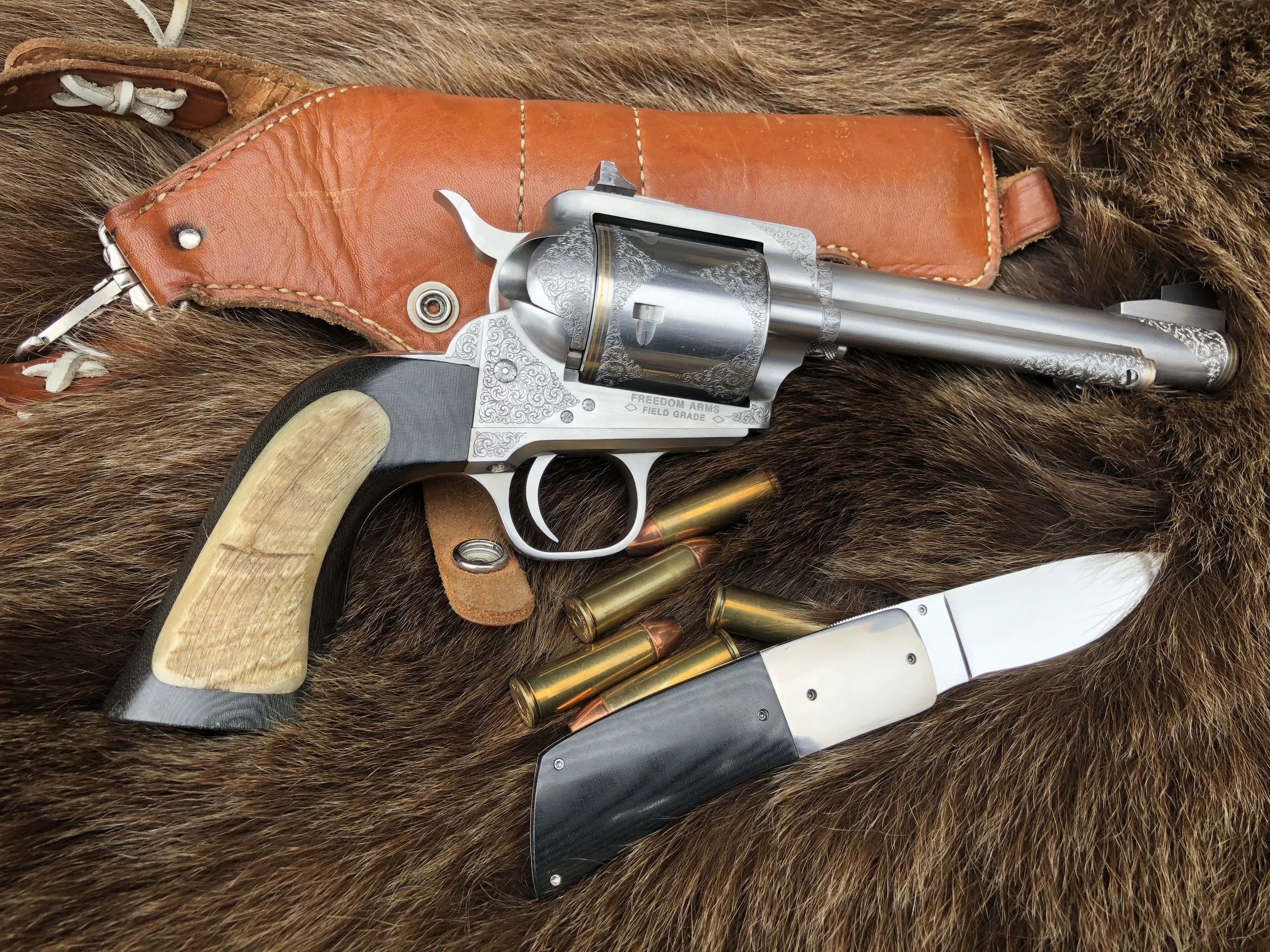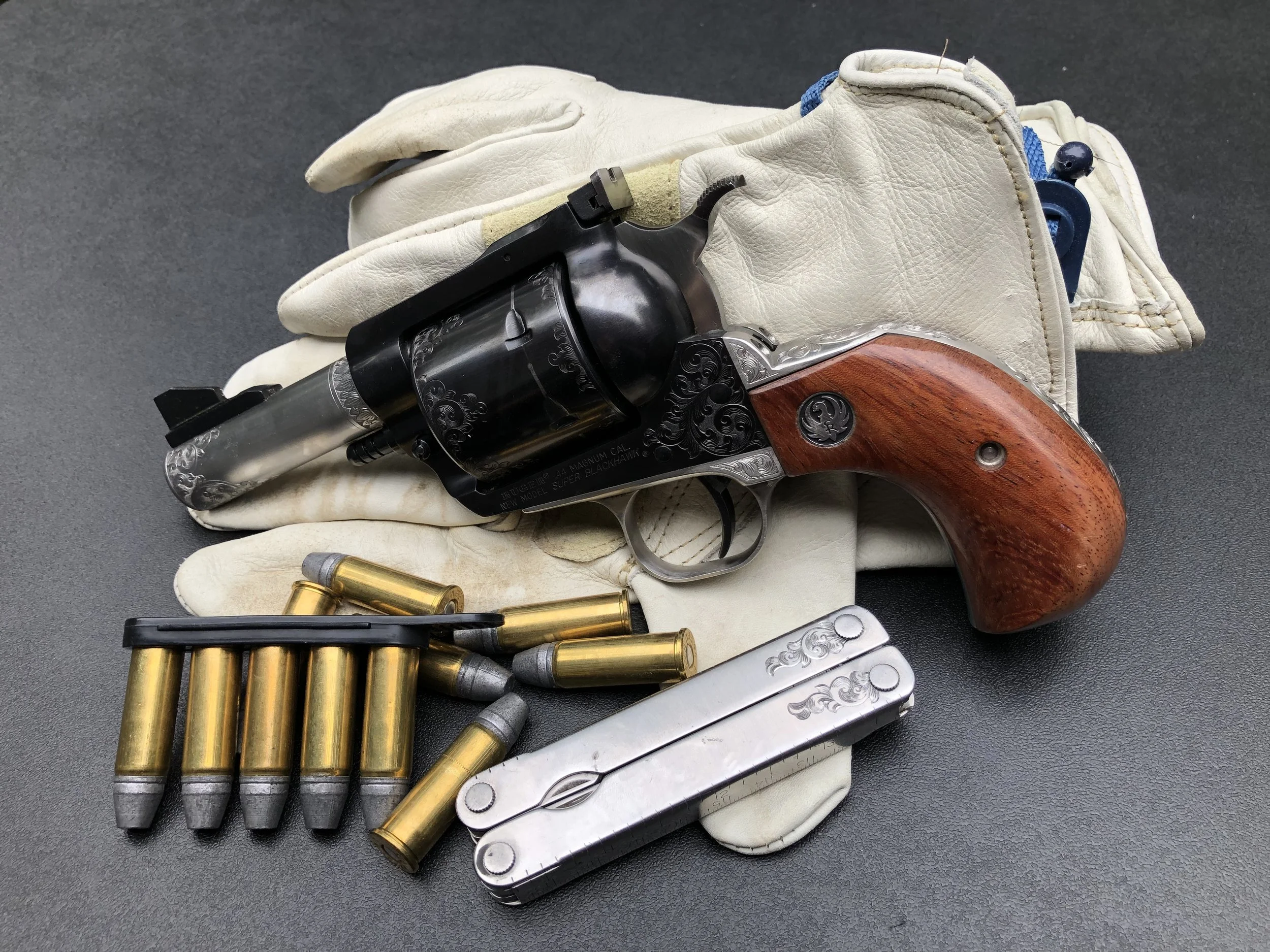An Alaskan Adventure Part I
My Kansas hunting partner and I were 200+ miles east/northeast of Anchorage at my friend, Lee Penwell’s place. Lee lived off the power grid about 35 miles south of Slana, a small town on Alaska’s Tok Cutoff highway. Steve and I had driven out to visit him for a few days in his remote homestead, which is close to some of the most beautiful scenery one can drive to in Alaska.
When we arrived, Lee was busy processing a young bull moose he’d taken late in the evening, two days earlier. A small, wiry man, he had struggled mightily as night closed in to get it field dressed, then packed to a four-wheeler for final transport home. In his haste to beat darkness, he’d left the bull’s small paddle antlers at the kill site. The extra work to get them out simply wasn’t worth the effort. He planned to return for them as soon as he was able.
For something to do while Lee ran his postal route (he was a remote road system contract mail carrier for USPS), we asked if we might have the antlers if we retrieved them. Alaska antler carvers take a small moose antler and carve the base end into an eagle’s head. The paddle and points resemble a stylized wing with primary feathers spread and extended. This carving is then suspended by wire or monofilament fishing line from the ceiling, which I find quite attractive. Lee said yes. He also said a bear almost certainly would have taken possession of the remains. That meant grizzly, as there were few black bears in his area.
Steve’s Freedom Arms
Since we were only visiting, we’d brought no rifles, just our handguns. Steve had along his Freedom Arms .454 Casull, and I had my Ruger .44 Magnum Super Blackhawk that I’d turned into a 3” sheriff’s model without ejector rod. I wanted more firepower for this job.
My sheriff’s model .44 Magnum Ruger Super Blackhawk.
When Lee was in gunsmith school, he’d put together a heavy lever-action rifle. Built on a high serial numbered 1886 Winchester, it was chambered for the .450 Alaskan Improved, a cartridge based on the .348 Winchester. Its power level was somewhere between today’s hot loaded 45-70 cartridges and the .458 Winchester. I thought it would be my best choice of his weapons for this job and asked if I might borrow it. Stoking its full length magazine tube with heavy bear loads, I was ready. Steve would carry his .454 revolver.
Lee gave us general directions to the kill site. We were to line up a notch in some mountains about three to four miles to the west with a mountain to the east. The kill site would be at the foot of that mountain. He, also, told us to look and listen for ravens and camp robbers (gray jays), as they would be there squabbling over offal pieces. Off we went.
The first part was easy. We simply walked north, up the road to where our landmarks lined up, then plunged into the brush and dark timber. I led the way with the rifle and Steve followed with my young Bernese Mountain Dog on a leash.
It was gloomy underneath the tall, aged spruce trees. Here and there a patch of bright sunlight filtered through. Stepping into the sunshine made it almost impossible to see into the darker, shadowed timber. I could see the top of the mountain to the east through the trees, but they obscured its base. We began to still hunt, stopping every few yards to look and listen for birds. Nothing. Silence. Spooky.
After living in Alaska for over 15 years, I was well aware of the danger we were walking in to. Grizzly speed combined with the possessiveness of their nature around food, savage temper, tremendous strength - all these attributes spelled a potential powder-keg. Tension literally flowed off me like an avalanche rolls down a mountain.
Rifle at port arms. Heavy, long barreled beast of a rifle. Wish I had more power in a shorter, handier rifle. Scan everything twice, peer into ever shadow, look everywhere. LOOK. Wish for better hearing. Too many hours without hearing protection on a tractor as a youth and too many shots fired the same way.
More silence. No bird sounds. That probably means there is a bear and he’s keeping them away from his food.
To Be Continued …


